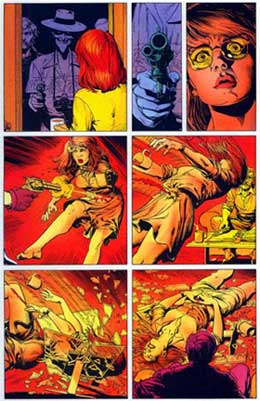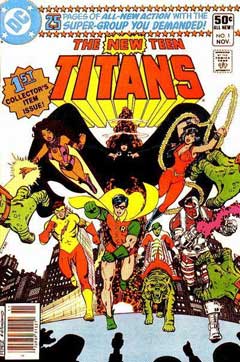Comics /
Cult Favorite
Continuity and the DCnU
By Philip Schweier
August 10, 2011 - 05:01
 |
| DC Comics co-publisher Dan DiDio |
Much ballyhoo has been made about the new DC Universe coming out next month. As favorite characters are revised, ret-conned or retired, many fans have decried the disruption of their personal vision of what the DC Universe is.
The editorial staff of DC Comics has seemingly cherry-picked which stories are now canon and which, in their eyes, never happened. But the problem with continuity in today’s comic book market is that so many storylines are interconnected in some way. By including one story, others become included if only by association.
For instance, DC co-publisher Dan DiDio has already said that
The Killing Joke is in continuity. In that story, Barbara Gordon was shot in the back, her spine shattered, leading her to become the wheelchair-bound Oracle. Yet within the new DC Universe, Barbara Gordon is identified as Batgirl. How DC Editorial proposes to reconcile those two story elements remains to be seen.
Nevertheless, fans all over the world are decrying some aspects of longtime DC Comics continuity as having never happened, such as the Marv Wolfman/George Perez run of
the New Teen Titans from the 1980s. Well, I’m here to tell you, kids, it happened. I have the comic books to prove it.
Just because a comic book publisher decides to radically alter the history of its characters doesn’t mean you must suddenly throw away the comic books and stories you’ve enjoyed for years. All those stories you love so much can still be revisited over and over again. Who cares that an editor in New York City says they are no longer relevant to the new creative direction? You bought ‘em; enjoy ‘em.
A 12-15 issue run of any given title is a form of continuity unto itself. Every title, written and drawn by a specific creative team, is a series of episodes, and when a writer leaves or an artist is reassigned to a different title is no cause for fans to suddenly rise up in anger because it means nothing.
The only worthless story is the story you don’t enjoy, for whatever reason. Those comic books need to be ignored. Some years back I rebuilt my
Legion of Super-Heroes collection from the 1970s and ‘80s. I still had from about #195, when Dave Cockrum came on board, until around #145; much of what followed I had dumped. When I began rebuilding, I started around #180, when Paul Levitz began his second run on the title.
The reason I ignored from #146-179 was because I didn’t enjoy those issues. I found the art and writing to be very uneven, as creative staff seemed to come and go every few months. So I have no problem ignoring those stories and events and disregarding them as continuity.
Which brings me back to that constant thorn in fandom’s collective side. Continuity is what you make of it.
The New Teen Titans of the 1980s is not necessarily beholden to
the Teen Titans of more recent years. Yes, they share the same name and some of the same reference points, but there is no reason to tie them so closely together – unless you absolutely want to.
But if you don’t want to, that’s okay. After all, they’re only comic books.
Praise and adulation? Scorn and ridicule? E-mail me at philip@comicbookbin.com
Last Updated: March 3, 2025 - 20:40


